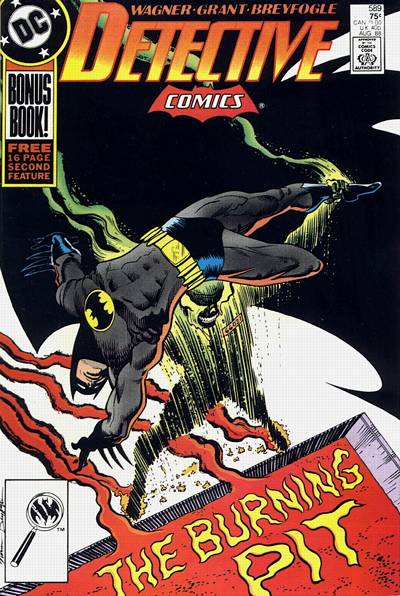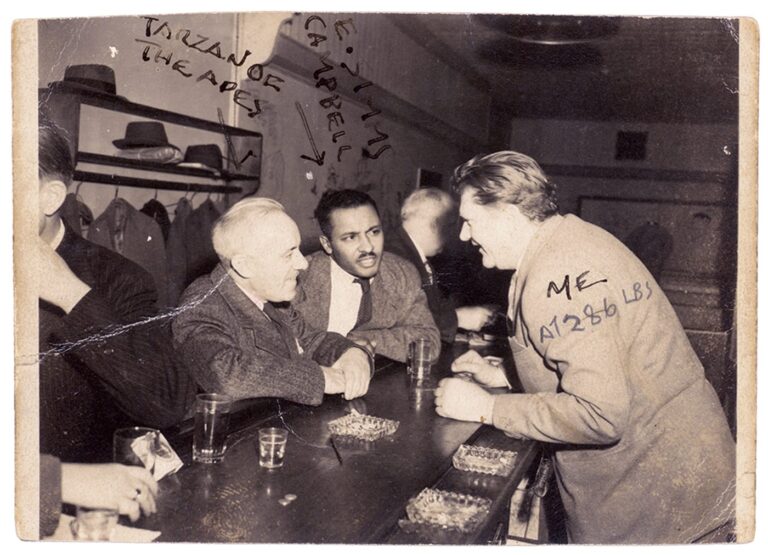It's Friday at The Comics Journal, which means it's Friday everywhere: enjoy it. We're launching ourselves into the weekend with a nice long conversation with some folks who know how to have such things: Joe Casey and Ian MacEwan. They both got on the horn with Sean Witzke to talk about their new Image Comics collaboration, the action comic MCMLXXV. Take a look at the art heavy post, but drink in the words as well--after all, when's the last time you caught a conversation about Jademan?
Jademan feels like it's completely been forgotten as a type of comic, they're really unlike any other mode of comics storytelling. It's one of those things that feels like someone came up with it independent of influence.
MacEwan: Those art teams put so much effort into the smallest details, and in so many styles. It's bewildering how panels switch from line art to fully painted to elaborate color holds that turn into abstract color explosions. I love the use of speed lines as active foreground elements. And blending that with all the phantom strikes, it loses any sense of space but makes up for it in sheer roller coaster ride. It's really effective at capturing a martial arts fight a the way that interprets long-take kung fu film fights. And wuxia is such a distinct fantasy genre, with each move having a name and discipline and celestial correspondence.
The production of those books too are just nuts, I loved how the back of each issue were full of pictures of artists working in the Jademan "bullpen" at their super specific art jobs. And above it all there's "Tony" Wong Fuk-Long always posing in expensive suits in front of his lamborghini. He's more Hong Kong comics' answer to Phil Spector than Stan Lee. He's written multiple books about his own greatness, and gone to prison more than once for defrauding his company and his employees. And he's spent the last few years trying to build a billion dollar Hong Kong Comics amusement park!
That's not all, of course--today also sees the conclusion of L. Nichols week of Diary comics. Kids and the Santa Cruz boardwalk. What's not to love?
And then there's today's Review, courtesy of Ryan Carey. This time around, Ryan is taking a look at Retrofit's The Prince, by Liam Cobb--and he cracked this one with some expectations. Were they met? Find out now.
The just-referenced cover sets the tone for the interior contents quite nicely, as Cobb employs a vaguely Mad Men-esque sensibility that could possibly best be described as “retro-futurism” to convey a briskly-told, emotionally-distant, decidedly vengeful version of an ostensibly simple yarn. His conceit of making the frog a mysterious, and possibly duplicitous, sudden arrival into the life of May, a neglected, financially well-to-do wife trapped in a loveless marriage with a typically philandering scoundrel of a husband adding a frisson of tension and unease to one of the most shop-worn plot skeletons you’d care to mention. It’s an intriguing enough wrinkle to keep you turning the pages, to be sure, but is it actually innovative?
 And now you'll have to indulge me--or click away, I won't know the difference. This, right here, is one of the first two comic books I ever purchased with my own money--the conclusion of a three parter featuring "The Corrosive Man", a plot to steal an inheritance involving hobo murders, an evil criminal named "Kadaver" who wears a devil mask, and a rare panel of Batman shown bantering with cops after dawn at the site of a car accident. The comic was written by John Wagner & Alan Grant, although those names meant nothing to me at the time. The name that did mean something was Norm Breyfogle. Along with Jim Aparo, Breyfogle's work on Batman defined my understanding of comics for a healthy period of my initial reading simply because Norm Breyfogle and Jim Aparo were my complete understanding of comics. Things like The Far Side and Calvin & Hobbes (and Garfield & Heathcliff) existed alongside them, but when it came to extended narrative reading, the art of those two individuals defined the bulk of the medium. Even when other DC comics of the time--always featuring Batman--appeared, none appeared as frequently, or as consistently. If I were to actually research Breyfogle--something I've thought of doing, but honestly never expected the question to arise so tragically early--I think that what I would find is that his most conspicuous images are the ones were he went off model, if only because it was so incredibly, fantastically rare to see him break his pattern. Unlike Aparo, whose work was full of a constant, meaty heaviness and beautiful symmetry, Breyfogle's Batman was an acrobatic creation, a thing forever in motion, and it was that from the very beginning. He drew characters intoxicated with the possibility of grace and the body's movement--if one were to strip them of their clothes, they'd be the bodies of contortionists, gymnasts, figure skaters. His Commissioner Gordon was one whose mustache always seemed intent on eating his mouth, and there was no emotion more happily drawn than when a character could excitedly recognize something--a friend, a fact, a lesson, a thing. In Breyfogle comics, things happened that were sad--the death of Tim Drake's mother, delivered in flashback by a sorrowful Bruce Wayne--but it was always the moments of joy and excitement in between the heroics that resonated with the most emotion and reverence. The electricity of his style disguised their content--in anyone else's hands, Wagner & Grant's script for Detective Comics #589 would have been a bloody, dismal affair--but in Breyfogle's hands, danger feels a bit playful, death a giant misunderstanding. His passing was too soon, anyone's passing is. Worser still is the fashion in which he was treated on his way towards it. He deserved better, and the universality of that sentiment in no way lessens its validity.
And now you'll have to indulge me--or click away, I won't know the difference. This, right here, is one of the first two comic books I ever purchased with my own money--the conclusion of a three parter featuring "The Corrosive Man", a plot to steal an inheritance involving hobo murders, an evil criminal named "Kadaver" who wears a devil mask, and a rare panel of Batman shown bantering with cops after dawn at the site of a car accident. The comic was written by John Wagner & Alan Grant, although those names meant nothing to me at the time. The name that did mean something was Norm Breyfogle. Along with Jim Aparo, Breyfogle's work on Batman defined my understanding of comics for a healthy period of my initial reading simply because Norm Breyfogle and Jim Aparo were my complete understanding of comics. Things like The Far Side and Calvin & Hobbes (and Garfield & Heathcliff) existed alongside them, but when it came to extended narrative reading, the art of those two individuals defined the bulk of the medium. Even when other DC comics of the time--always featuring Batman--appeared, none appeared as frequently, or as consistently. If I were to actually research Breyfogle--something I've thought of doing, but honestly never expected the question to arise so tragically early--I think that what I would find is that his most conspicuous images are the ones were he went off model, if only because it was so incredibly, fantastically rare to see him break his pattern. Unlike Aparo, whose work was full of a constant, meaty heaviness and beautiful symmetry, Breyfogle's Batman was an acrobatic creation, a thing forever in motion, and it was that from the very beginning. He drew characters intoxicated with the possibility of grace and the body's movement--if one were to strip them of their clothes, they'd be the bodies of contortionists, gymnasts, figure skaters. His Commissioner Gordon was one whose mustache always seemed intent on eating his mouth, and there was no emotion more happily drawn than when a character could excitedly recognize something--a friend, a fact, a lesson, a thing. In Breyfogle comics, things happened that were sad--the death of Tim Drake's mother, delivered in flashback by a sorrowful Bruce Wayne--but it was always the moments of joy and excitement in between the heroics that resonated with the most emotion and reverence. The electricity of his style disguised their content--in anyone else's hands, Wagner & Grant's script for Detective Comics #589 would have been a bloody, dismal affair--but in Breyfogle's hands, danger feels a bit playful, death a giant misunderstanding. His passing was too soon, anyone's passing is. Worser still is the fashion in which he was treated on his way towards it. He deserved better, and the universality of that sentiment in no way lessens its validity.






